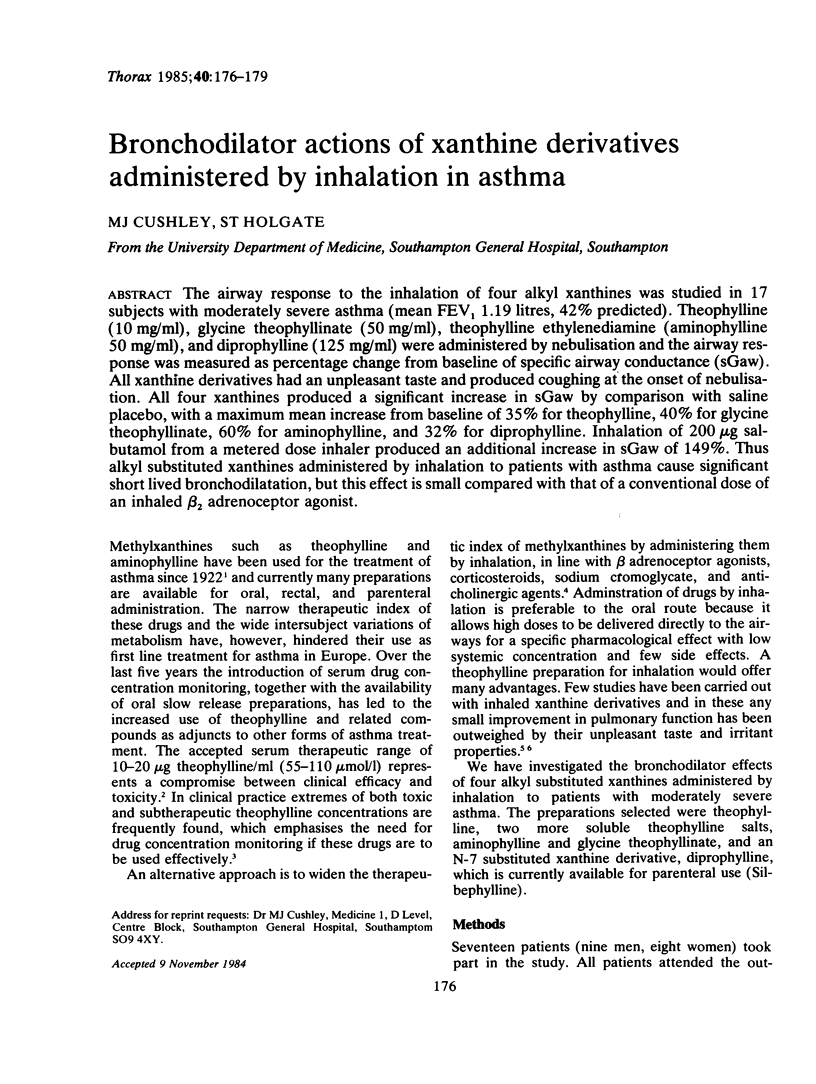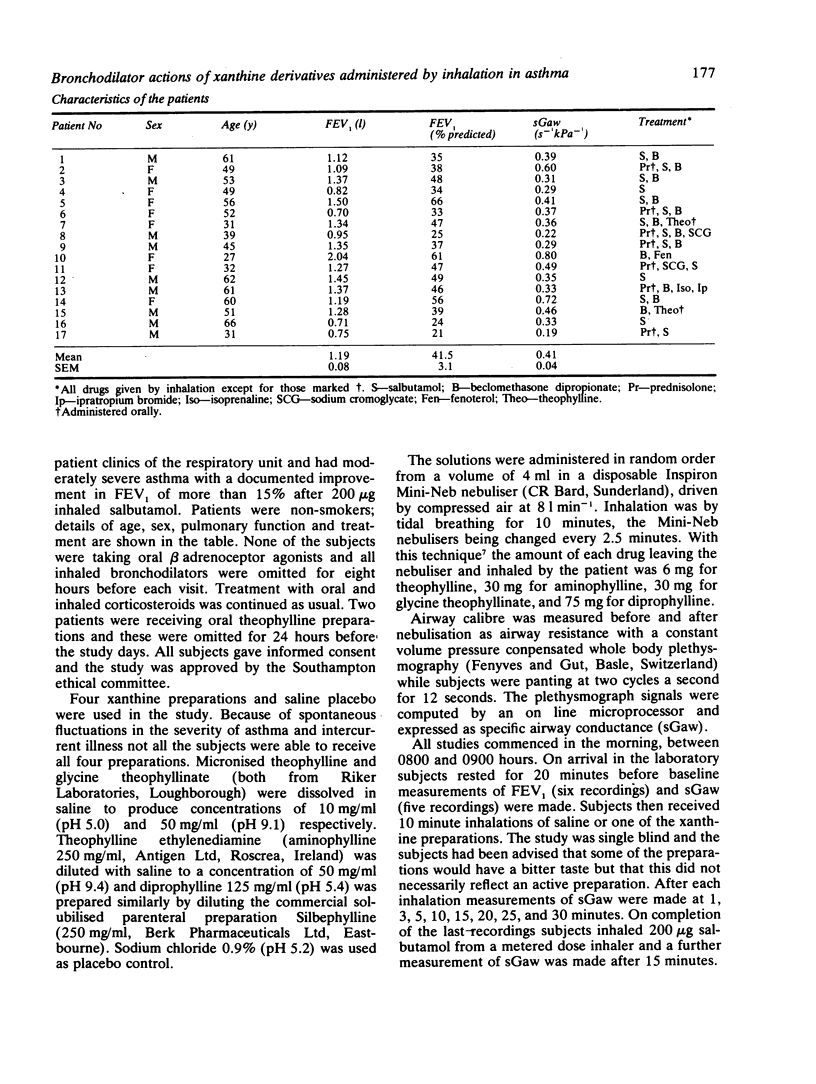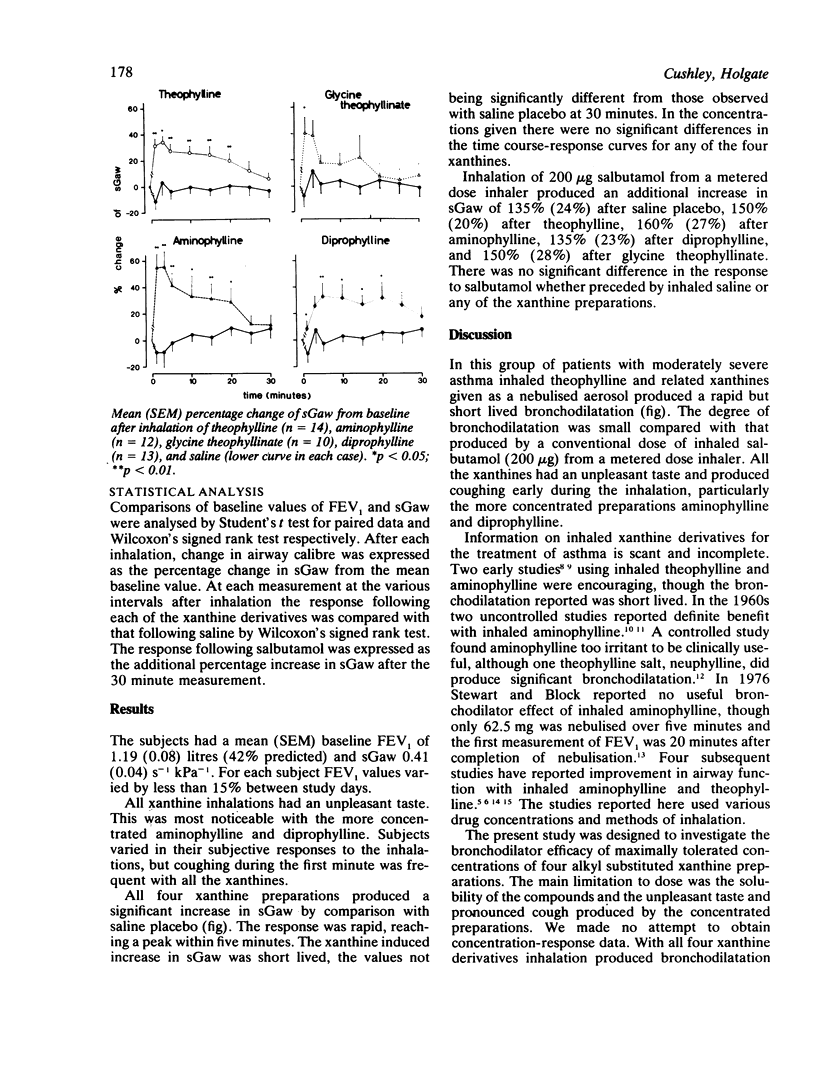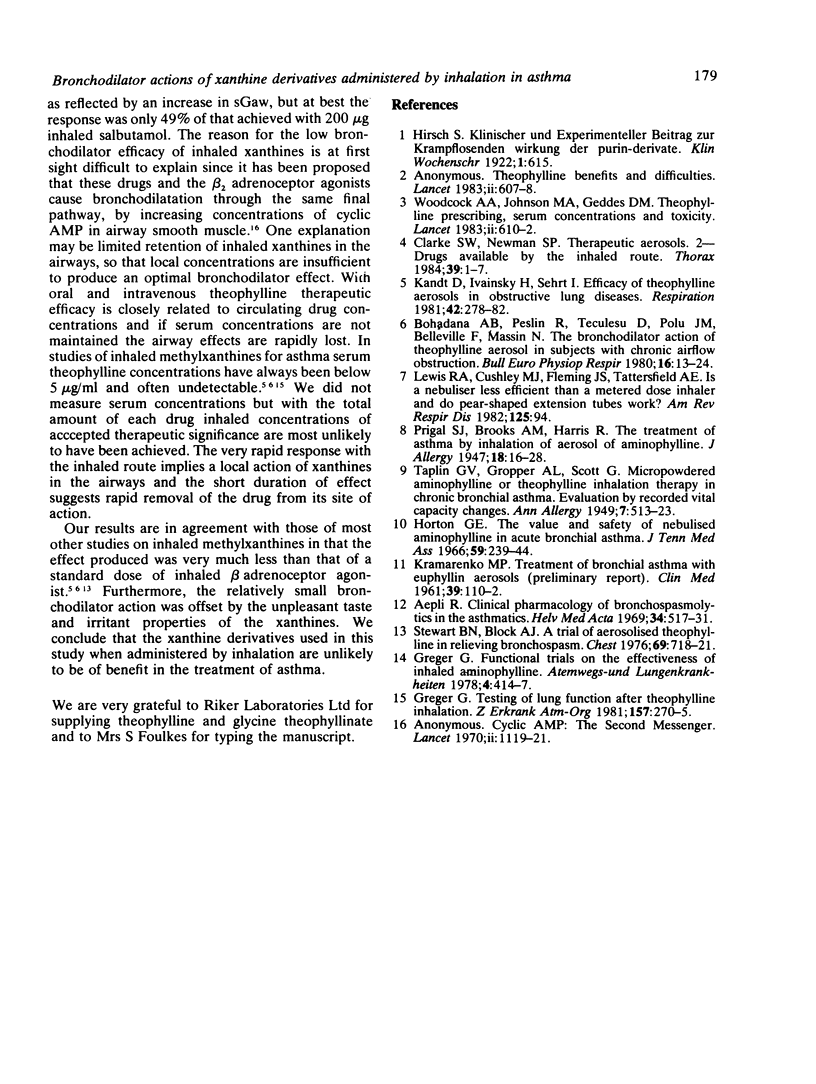Abstract
The airway response to the inhalation of four alkyl xanthines was studied in 17 subjects with moderately severe asthma (mean FEV1 1.19 litres, 42% predicted). Theophylline (10 mg/ml), glycine theophyllinate (50 mg/ml), theophylline ethylenediamine (aminophylline 50 mg/ml), and diprophylline (125 mg/ml) were administered by nebulisation and the airway response was measured as percentage change from baseline of specific airway conductance (sGaw). All xanthine derivatives had an unpleasant taste and produced coughing at the onset of nebulisation. All four xanthines produced a significant increase in sGaw by comparison with saline placebo, with a maximum mean increase from baseline of 35% for theophylline, 40% for glycine theophyllinate, 60% for aminophylline, and 32% for diprophylline. Inhalation of 200 micrograms salbutamol from a metered dose inhaler produced an additional increase in sGaw of 149%. Thus alkyl substituted xanthines administered by inhalation to patients with asthma cause significant short lived bronchodilatation, but this effect is small compared with that of a conventional dose of an inhaled beta 2 adrenoceptor agonist.
Full text
PDF



Selected References
These references are in PubMed. This may not be the complete list of references from this article.
- Aepli R. Clinical pharmacology of bronchospasmolytics in the asthmatic. Helv Med Acta. 1969 Mar;34(6):517–531. [PubMed] [Google Scholar]
- Bohadana A. B., Peslin R., Teculescu D., Polu J. M., Belleville F., Massin N. The bronchodilator action of theophylline aerosol in subjects with chronic airflow obstruction. Bull Eur Physiopathol Respir. 1980 Jan-Feb;16(1):13–24. [PubMed] [Google Scholar]
- Clarke S. W., Newman S. P. Therapeutic aerosols 2--Drugs available by the inhaled route. Thorax. 1984 Jan;39(1):1–7. doi: 10.1136/thx.39.1.1. [DOI] [PMC free article] [PubMed] [Google Scholar]
- Horton G. E. The value and safety of nebulized aminophylline in acute bronchial asthma. J Tenn Med Assoc. 1966 Mar;59(3):239–244. [PubMed] [Google Scholar]
- KRAMARENKO M. P. [On the treatment of bronchial asthma with euphyllin aerosols (preliminary communication)]. Klin Med (Mosk) 1961 Jan;39:110–112. [PubMed] [Google Scholar]
- Kandt D., Ivainsky H., Sehrt I. Wirkung von Theophyllin-Aerosolen bei obstruktiven Erkrankungen der Atemwege. Respiration. 1981;42(4):278–282. doi: 10.1159/000194443. [DOI] [PubMed] [Google Scholar]
- Stead W. W., Dutt A. K. Chemotherapy for tuberculosis today. Am Rev Respir Dis. 1982 Mar;125(3 Pt 2):94–101. doi: 10.1164/arrd.1982.125.3P2.94. [DOI] [PubMed] [Google Scholar]
- Stewart B. N., Block A. J. A trial of aerosolized theophylline in relieving bronchospasm. Chest. 1976 Jun;69(6):718–721. doi: 10.1378/chest.69.6.718. [DOI] [PubMed] [Google Scholar]
- Woodcock A. A., Johnson M. A., Geddes D. M. Theophylline prescribing, serum concentrations, and toxicity. Lancet. 1983 Sep 10;2(8350):610–613. doi: 10.1016/s0140-6736(83)90691-8. [DOI] [PubMed] [Google Scholar]


